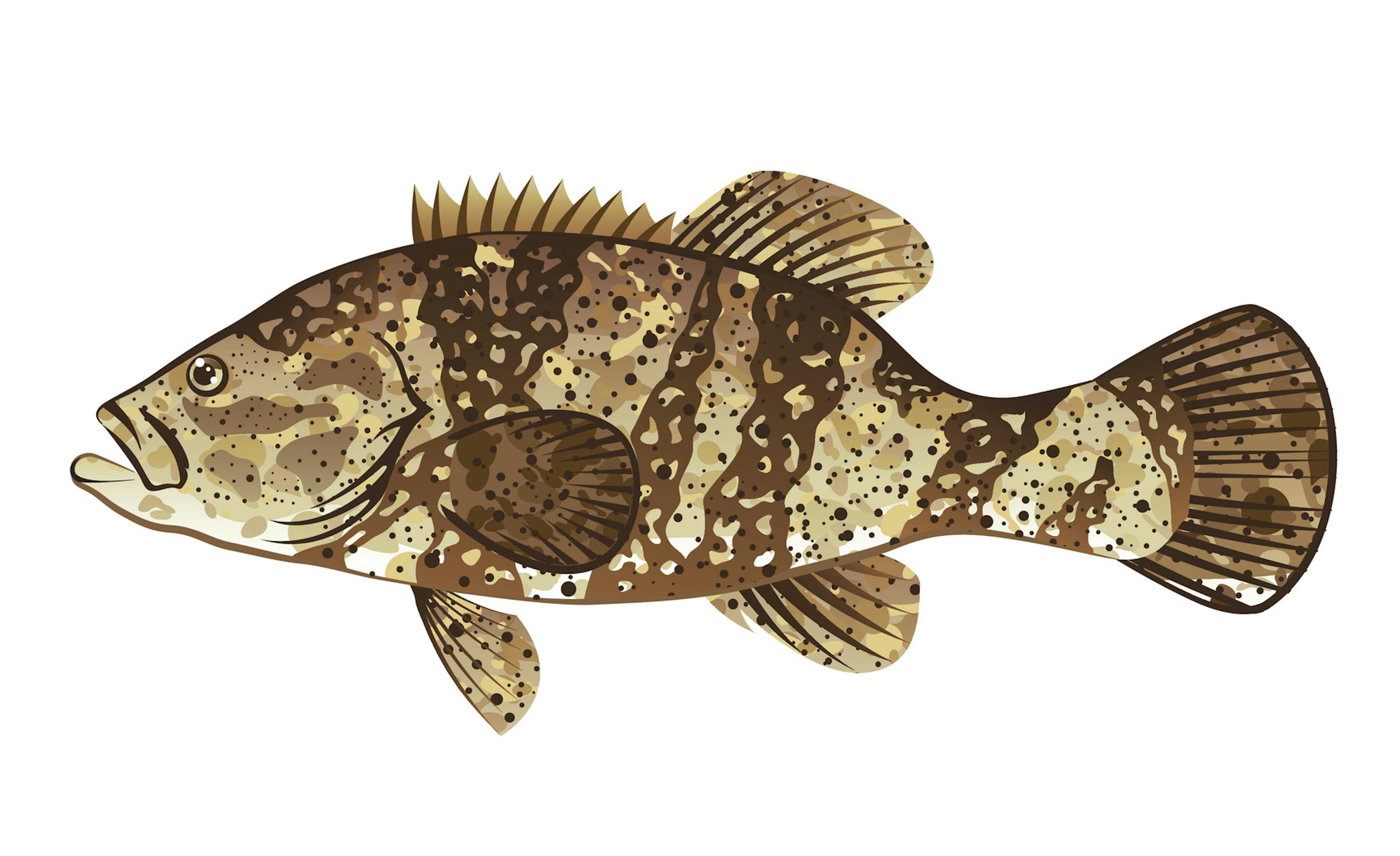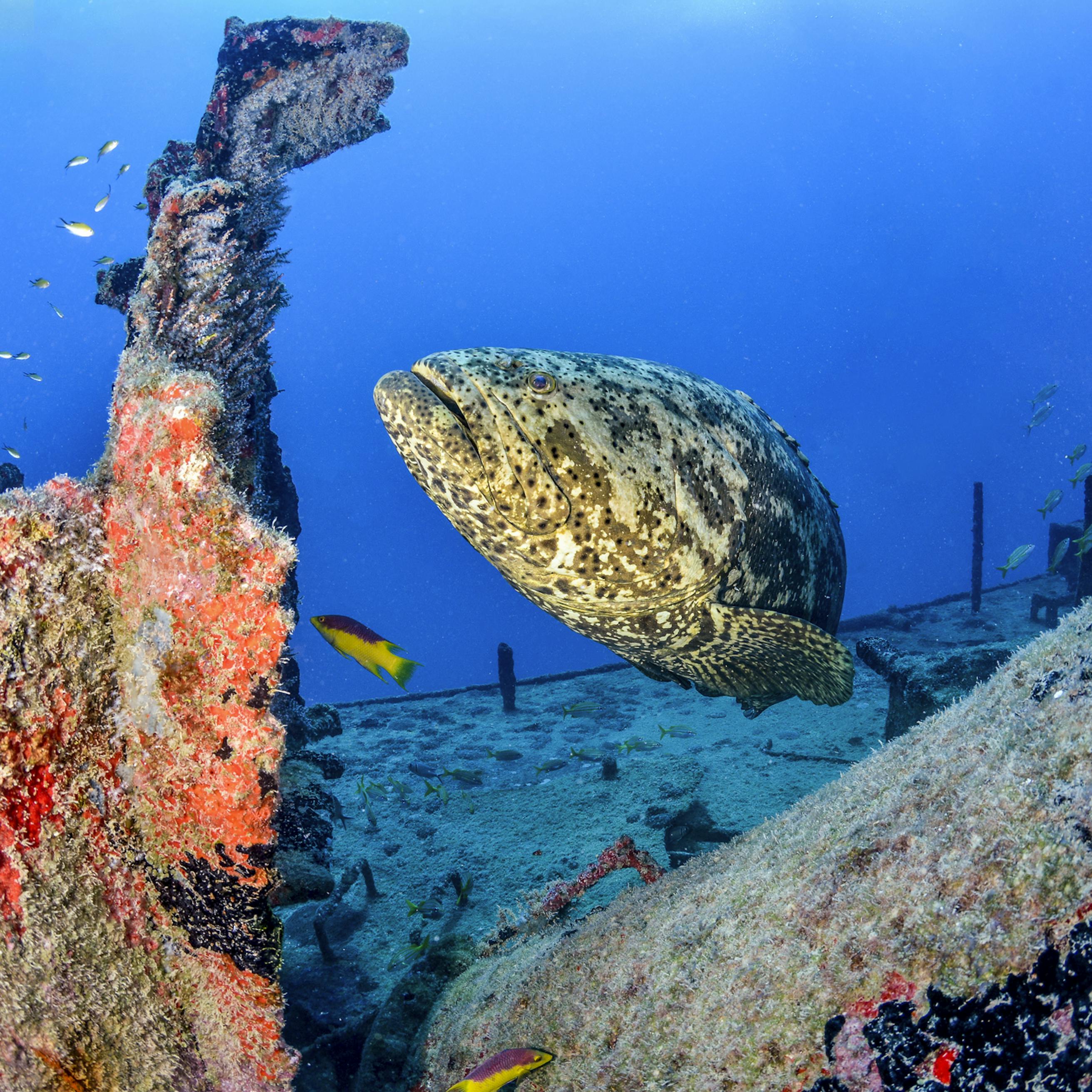Free Shipping on orders of $49+ | Signup for Direct Rewards
Free Shipping on orders of $49+ | Free Store Pickup | Signup for Direct Rewards
Free Shipping on orders of $49+ | Signup for Direct Rewards
Free Shipping on orders of $49+ | Free Store Pickup | Signup for Direct Rewards

Picture this: You’re scuba diving around an artificial reef in the warm waters around South Florida. You suddenly hear this vibrational grunting sound, and as you turn to investigate, you see a massive brown fish about the size of a VW Beetle staring you down. Not only does this huge fish seem to not fear you in any capacity, but it’s pretty clear you’ve trespassed on its territory. Congratulations, you’ve just annoyed a Goliath Grouper. The good news is, they’re not exactly known to attack humans. The bad news, well, they will do whatever is necessary to protect themselves if they feel threatened, charging and biting are rare, but have not been unheard of. When we are diving, it’s ideal to know what sort of animals we’re going to be around so we can be better prepared for what we may encounter. Are you going to be diving in an area known to have Goliath Groupers? It’s a good idea to know how to identify these animals and know about their personalities and other helpful information. Besides, as the biggest species of grouper in the Atlantic, Goliath Grouper are absolutely fascinating in general. As we do with fascinating things, let’s dive deeper into this knowledge and go over a variety of facts about the Atlantic Goliath Grouper.
Aside from size, how are we to know we’re looking right at an Atlantic Goliath Grouper? Like other groupers, the Goliaths have large, frowning mouths and small eyes. The colors, markings, and size is what really sets them apart. Goliath Grouper can grow up to slightly more than 8 feet in length and weigh up to 800 lbs. The caudal and pectoral fins are rounded, and they have two dorsal fins, one spikey one in front and a larger, gently rounded one just behind it. The markings are more vivid in their youth and include small dark spots along the head and fins and thick bars or stripes along their sides. They’re a tan to brown color that would help them blend into their surroundings if it weren’t for their gargantuan size. While the oldest recorded Goliath Grouper was 37 years old, scientists believe they can live to be at least 50.

Regionally, Goliath Groupers can be found in the warm waters of the Western Atlantic Ocean, in the Caribbean, and in the Gulf of Mexico, from as far north as North Florida to as far south as Brazil. In their first 5-6 years of life, they spend their days amongst the mangroves to optimize protection against predators. When they’re old enough (and big enough) to protect themselves, they make their way to more open waters, finding an area of the seafloor that’s close to easy food—this includes rocky areas, coral reefs, and artificial reefs.
The Atlantic Goliath Grouper has a somewhat diverse diet. They enjoy crustaceans like spiny lobster and crab. They’ll also eat smaller fish, including the invasive lionfish and small sharks, invertebrates like octopuses, and young sea turtles. They take an ambush approach to their hunt, waiting patiently for an unsuspecting snack to swim by. At the opportune moment, they’ll open their large mouths, drawing their prey in by powerful suction and swallow them whole. They are essential to the coral reef ecosystem by keeping balance among the smaller animal population.
On the other side of things, Goliath Groupers don't have to watch their back much regarding other predators, but that doesn’t mean they aren’t the prey themselves every now and then. Generally the only predators to fully grown Goliath Groupers are larger sharks.
While Goliath Groupers can sometimes be found in small groups, they tend to be solitary creatures, and quite territorial as well. When Goliath Groupers feel their territory has been trespassed by another animal, they’ll aggressively “bark” at them by making a loud booming sound using their swim bladder to do so. They aren’t afraid of much, so they usually don’t hesitate to defend themselves and their space however necessary, even charging at the trespasser if they didn’t get the barking hint.
They do have an annual social gathering where more than 100 Goliath Groupers will meet for breeding around the full moons from July to September in the Northern Hemisphere. When it comes to breeding, these fish participate in broadcast spawning, where males and females will release their sperm and eggs into the water and the fertilized egg will drift along with the current until it’s time for it to hatch.

From the 1950s to the 1980s, Goliath Groupers were overfished nearly to the point of extinction. Their numbers dropped so severely that scientists estimate roughly 80% of their population was wiped out. While some fish are known to spawn and grow rapidly, the Goliath Grouper has a slow growth rate, causing them to take anywhere from 5-8 years to reach reproductive maturity. Because of this, their harvest was prohibited in 1990 in an attempt to help restore their population. Four years later, the International Union for Conservation of Nature (IUCN) classified the Goliath Grouper as critically endangered. Although their numbers have improved in these decades since, they are still under the critically endangered list. Scientists are unsure of how many Atlantic Goliath Groupers there are today, making it challenging to know the true growth rate currently at hand.
Overfishing isn’t the only cause of a slow-growing population either. Goliath Groupers tend to be susceptible to mass mortality events such as red tide blooms and even cold snaps. Cold snaps that drop the water temperature below 51 degrees can be surprisingly fatal to these warm water loving fish. Additionally, the loss of mangrove ecosystems causes juvenile Goliath Grouper to struggle finding protection while they mature.
In March 2022, a proposal made by Florida Fish and Wildlife was approved for the harvest of juvenile Goliath Grouper. Up to 200 permits would be available to applicants chosen through a lottery system. Recreational fishing for these smaller Goliath Groupers would be accessible throughout the waters around Florida, excluding the coastline that runs from Martin County down through the Keys. To keep breeding grounds safe, the season is set to be held for a few months in the spring each year with spring 2023 being the first season for Goliath Grouper harvest in decades.
Many climate activists have expressed concern and opened petitions against the reopening of Goliath Grouper harvesting. Some reasons, among many others, include the lacking knowledge of how much the population has actually grown. The approximate growth rate cited in support of the harvesting is based on when the grouper population was at its absolute lowest point in the 1980s rather than calculating from their original population before they were vastly overfished in the 50s. Another concern is that, while there has been improvement in their numbers, Goliath Groupers are still on the critically endangered species list, and being so, should remain protected until their populations are fully restored.
Swim away!! No, just kidding, but definitely don’t go chasing after it, or it may just end up chasing after you. They are courteous enough to offer a warning bark if you’re getting too close. Take the warning and back away. As with any wild animal on land or in the sea, keep your distance and observe respectfully, staying mindful of your surroundings. In no capacity whatsoever should you attempt to stalk, touch, feed, ride, or do literally anything other than observe from a distance. As divers, we are visitors to other beings’ homes and should show absolute respect to all while we explore.
When did Goliath Groupers become protected?
Goliath Groupers became protected in 1990 after overfishing nearly wiped out their entire population.
Why are Goliath Groupers protected?
Because Goliath Groupers are slow to rebound and their populations were depleted so severely, they are considered critically endangered and their harvest had been prohibited for more than thirty years until that ban was lifted in Florida in 2022.
What eats Goliath Grouper?
While juvenile Goliath Groupers can be preyed on by a variety of predators including larger fish and sharks, fully grown Goliath Groupers tend to only have larger sharks as their sole predator.
How many Goliath Groupers are left?
That is the question, isn’t it? While we can estimate the general growth rate of Goliath Groupers, scientists are unsure of the population size as of yet.
Where do Atlantic Goliath Groupers live?
You can usually find Goliath Groupers hanging around coral reefs and rocky or muddy bottoms. They prefer warm waters which is why you’ll find them while scuba diving around Florida, in the Caribbean, in the Gulf of Mexico, and as far south as Brazil.
Are Goliath Groupers dangerous?
Goliath Groupers are not dangerous if you keep your distance and heed their warnings. Usually they pay no mind to humans, but if they feel threatened, they will warn you with a deep grunt of disapproval, and, in extreme but rare cases, have been seen charging or biting humans who invaded their boundaries.